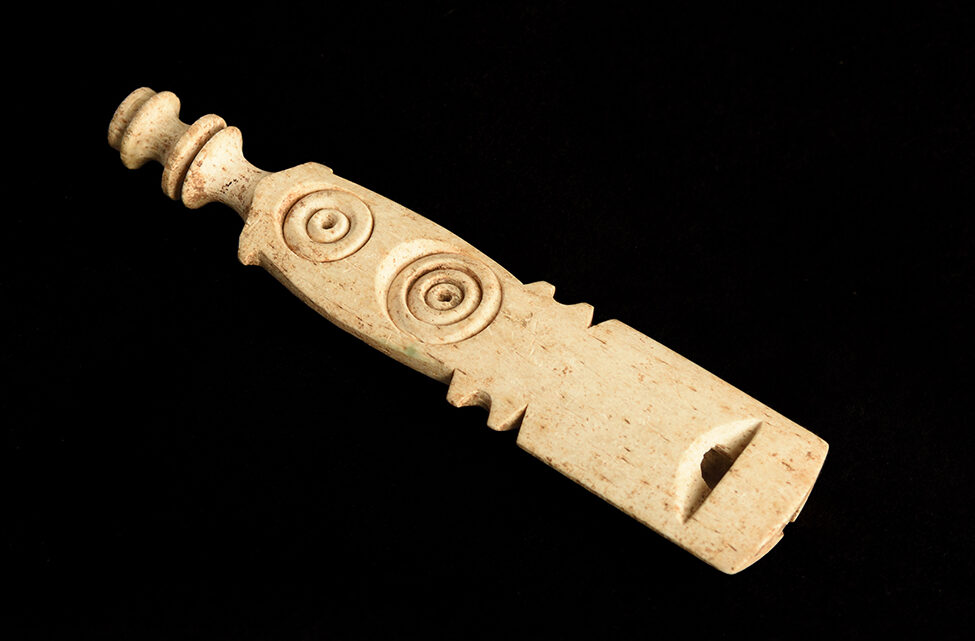
Bone
1st-2nd c. AD
Empúries (L’Escala – Alt Empordà)
The archaeological record has preserved aerophone musical instruments, such as flutes, whistles or flabiols, from as early as the Palaeolithic. Often made from a bone, they are extremely fragile because in an acidic context the organic matter is not preserved. They were generally fashioned out of a fragment of hollowed out long bone in which holes were made to allow them to sound.
This example is a Roman whistle. It came from the systematic looting of the Emporitan necropolis. It was acquired by the Monuments Commission and, in the absence of archaeological context and parallels, it can presumably be dated to the 1st-2nd centuries AD.
It is made of a fragment of flat bone (8 x 1.8 cm) with a slightly convex profile. The sides are carved with a decoration of two groups of concentric circles on each face and the distal end, where it was held, delicately turned. With a thickness of just over half a cm, it has a fine perforation inside through which the air enters and an exit hole very close to the mouthpiece.
It is a magnificent example of the skilled craftsmanship of the artisans who worked the bone. It is a beautiful object that combines musical functionality with a highly accomplished aesthetic appearance. We cannot know to whom it belonged, whether a child or an adult; nor what its precise function was. However, since it accompanied its owner to the afterlife, it must have been a very precious or significant object for her.
